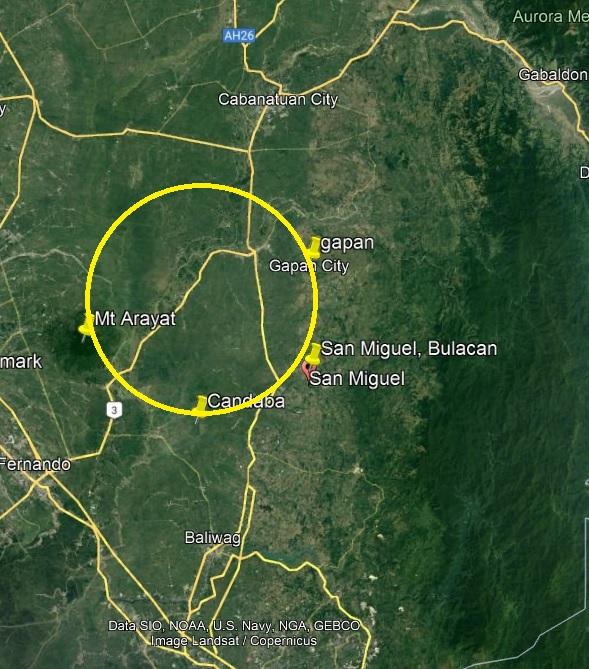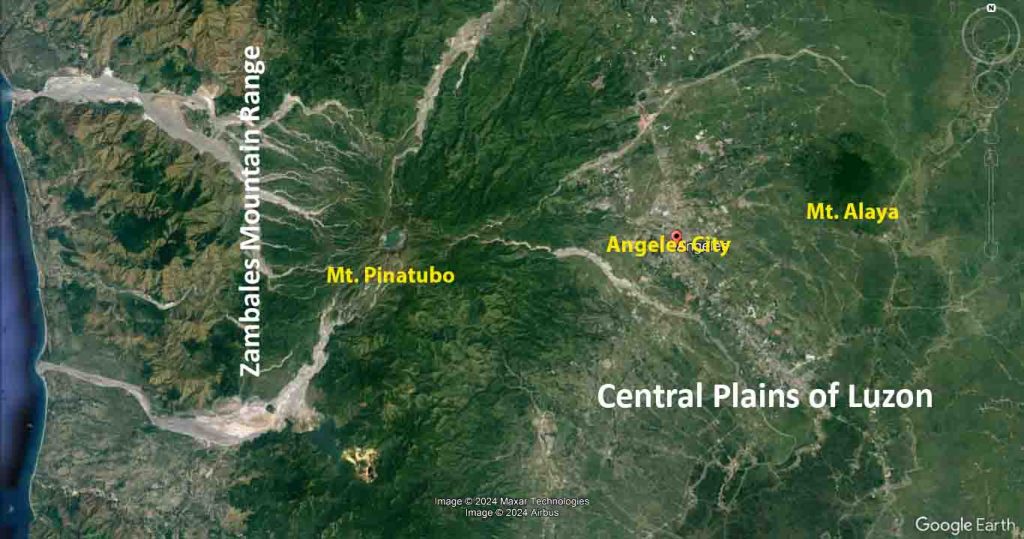52 Weeks in the Ark with Noah and Family (WEEK 28) – How Noah’s Tale Was Submerged in the Legends of Kapuluang Ophir
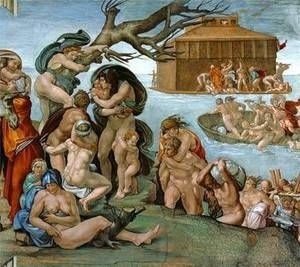
“And the waters decreased continually until the tenth month. In the tenth month, on the first day of the month, the tops of the mountains were seen.”
– Gen. 8:5
WEEK 28 (4thto 10thKislev, the 9th Month, in the Hebrew Religious Calendar)
By the end of this week, only 4 days would remain till the mountain tops would be seen. This seems to tell us that while the Ark had landed on the 25th Week, it would take exactly one month to go down a depth of less than the Ark’s height of 30 cubits or 15.7 meters. On the average, the rate of the floodwaters’ decrease is about half-a-meter per day. We will look back and use this figure later on when we finally reach the time when the floodwaters totally cease.
When Noah took his final step into the Ark and turned around to take a somber last look at the doubled-cursed world, he must have wept and fallen on his knees, along with his family. After having spent almost 300 days in the Ark, how eager he must have felt to finally step out of the Ark and to see how the world would look. Yet, he would not even know where he would land, whether at the same place he had built the Ark or somewhere nearby or so far away. Even today, aside from the fact that it landed on the “mountains of Mt. Ararat”, we do not really have enough proofs to categorically say where the Ark landed.
Surely, literalistic believers would claim the place is exactly what has been written or revealed. Yet, we showed in the previous chapter that the issue is not as easy and as clear-cut as reading what is written and what has been accepted by conventional thinking. For we had to first ask and settle the question where Noah built the Ark and then resolved the issue whether the Ark travelled far from its origin or essentially remained where it had started. We then proceed based on our past findings and our conclusions and proceed to further vet those findings and conclusions.
Of course, like Noah at this stage in the tale, we have no visual proof (a.k.a., GPS-armed eyewitness account) of where the Ark was from the start, at any point on its “journey” and when it landed. Did Yah mean for us to lose our way or to follow the exact route of the Ark; or is it information that does not make any difference at all in the story? Meaning, we should not care where Noah built the Ark and where he landed and, more importantly, where he continued to live, as well as his descendants, for 349 years before he passed away. We do not have to go far to convince ourselves that such information is indeed available in scriptures. And for those of us who give weight to the testimonies of geology, archeology, mythology, anthropology, meteorology, history and culture, and how they relate to Revelation, our goal of going into the bottom of this probably-the-most-scrutinized story (next to the New Testament Gospel story) is certainly doable, necessary and justifiable. By the way, Michelangelo devoted 3 scenes from the life of Noah among his 9 vault paintings at the Sistine Chapel, namely: the Ark and the Flood, the sacrificial offering of Noah after the Flood, and the drunkenness of Noah. Along with the Creation story, these 3 paintings are the first to be seen by any visitor upon entering the chapel.
This writer has published a 230-page book on the Ark and the Great Flood and, so far, 28 chapters about the same epic story. And the story is a continuing saga we are now a real part of! If that does not make your eyes blink or your lips quiver, then you do not truly value your own soul. But please read on; the New Spiritual Ark of Noah is about to leave port and is still open to anyone who wishes to escape the coming judgment by fire. But we are getting ahead of our story; we will deal with that at the proper time. We still have to see the rainbow and review the 4,500-year-or-more interim between the Great Flood and the coming Great Fire. We all live at the tail-end of what will be a truly world-turning event never before seen and experienced by any human being. So, we proceed.
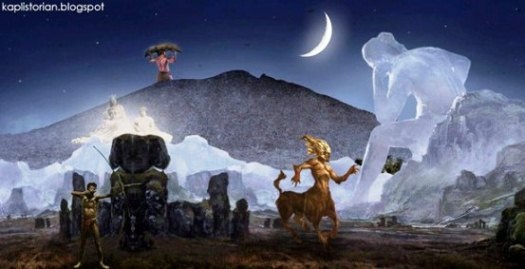
The Role of Myths and Legends
Why do the ancient myths and legends, in spite of their fantastic and supernatural nature, continue to captivate the minds of many generations of humans in practically all nations? Hollywood, in fact, continues to rake in billions of profits just making and remaking movies about superheroes (a.k.a. gods and goddesses). Obviously, there is intentional design to inure us from actually believing such impossible stories and entities (selling them as pure entertainment but not as real history, that is); hence, we easily forget that these stories had their origins in real events and in people who actually performed supernatural and amazing feats we either label as magic, sorcery or fanciful (science-based) tricks. So, depending on the purveyors of these stories in our times, we can either accept them at their face-value as simply fables or tales for kids, or as the collective memories of past civilizations presented in a literary form that is acceptable but not totally factual or scientific, although overall, they are both historically-based and reality-based. Hence, these tales have solid, genuine origins and can, therefore, help up decipher the real past.
We told the legend of Mariang Sinukuan, the female guardian of Mt. Arayat, the mountain where we placed the Ark’s landing. However, in retrospect, the legend tells a deeper and wider narrative than we have told because the main character, Sinukuan (“the one to whom people surrender”) or Suku (“surrender”), is a male divine-figure like the Olympian gods, the firstborn of Calupit and Gargen Cargon, who were descendants of Adam and Havah. (Take note of this direct reference to ancient biblical narratives in this pre-colonial narrative, as well as in many others which are common among natives living in other regions of the archipelago (Kapuluang Ophir) that also allude to Noah and other patriarchs. How could natives who never had contacts with Europeans prior to the 16th century have concocted these bible-based stories, particularly the Flood tale which they share with over 100 other nationalities?) (c/o Kaplistorian Blog)
Cargen Cargon, a gigantic human with great powers, supposedly came from another place and settled on Mt. Arayat, which he later passed on to Sinukuan after his death. The story of Sinukuan provides a link to our Flood story as well, which many may not have properly deciphered. It appears that the tale includes 2 other prominent mountains of Southern Luzon that could help us solve the riddle about the plural reference in the phrase: “mountains of Arayat”. West to Arayat in the Zambales mountain range is the supposed former “king of Luzon mountains”, Mt. Pinatubo, a previously-dormant volcano which erupted in June 1991 after over 6 centuries. Could it have been at one time the tallest among the mountains of Luzon in pre-history? It stands now at 1,486 meters above sea level; whereas, it was 1,745 meters before the 1991 eruption. (Mt. Peleg or Pulog in Banawe remains the highest in Luzon Island at almost 3,000 meters.) Its very name (which means “allowed to rise or grow”) could refer to Pinatubo’s orogenetic roots, that is, how it became a mountain.
Actual Geologic Basis for Ancient Myths
Did Mt. Pinatubo also rise during the Flood, as we also surmised about Mt. Arayat and most all of the high mountains of Asia, Africa and the rest of the world? For if Noah indeed lived in a relatively flat Pangaea before the Flood, the cataclysmic events that accompanied the Deluge brought about the appearance of mountains and volcanoes that resulted from the Earth’s geologic upheaval and expansion. How can a mountain be “made to rise” (from the plains or from a hill, perhaps) and so derive its name if it did not do so? And who else could have given it its name other than someone who used to live where it arose? And if Adam (whom Elohim named when They created him) was tasked to name animals and plants, why should a mountain not also get a name; for Genesis itself gives names to the garden Elohim planted in Paradise, as well as the 4 rivers that flowed out of Eden. The Word speaks and gives words to help us to live with and in, to think of and to communicate the Truth.
As the story goes, the deity living on Mt. Pinatubo, Namalyari (“the god who is able; or the owner”), was a friend of Sinukuan who wanted to marry one of the daughters of the Arayat ruler. However, the two battled, throwing rocks at each other (apparently giving us a graphic picture of 2 volcanoes erupting at the same time) with Sinukuan ending as victor by reducing the Zambal mountain range into scattered low mountains. Although Arayat stands at only 1,000 meters today, it could have been much higher in the past. For it also had to battle with another powerful enemy named Makiling (“favorable”) in Laguna, way down in Southern Luzon, the name of another perhaps extinct volcano. Makiling’s sons had kidnapped the 3 daughters of Sinukuan, who retaliated by killing the sons of Makiling, who, in turn, avenged the death of his sons by hurling a gigantic pestle at Arayat, chopping off its top. Sinukuan, in return, threw a mortar at Makiling and turned it into a hill. (Note the use of the “lusong” – mortar and pestle – in the story. One of the possible roots of the name Luzon is “lusong”.) This cataclysmic tale, which parallels another ancient tale that sets the origins of Kapuluan to the Flood of Noah, apparently gives us a prehistoric view of geologic processes that transpired before and after the Flood, as, most likely, witnessed by Noah and his family.
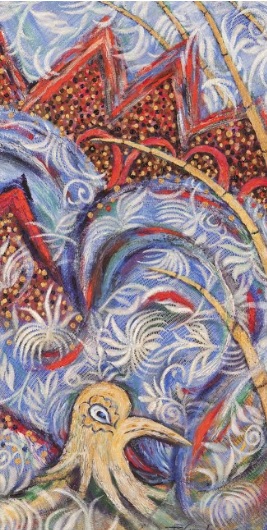
The Myth of Kapuluan’s Origins and the Great Flood
Here is the myth of this archipelago’s origins:
A bird flies all alone, looking for a place to land on. Not finding any in the vast deep ocean, it uses its intelligence to force things to happen. It induces a fight between the sea and the sky.
Thus, the angry sea sends big waves and big rocks to drive away the sky which was then very low. This led the sky to go higher and higher to escape the waves and rocks. But the sea’s anger kept on driving the sky upward. Getting tired from avoiding the sea, the sky fights back by hurtling back the giant rocks at the sea.
The rocks that fell made up the seven thousand islands of Kapuluan. The bird finally rested on land.
Let us see what aspects of this story have parallelisms with the biblical account and the geological occurrences we have presented here.
First, the lonely bird searching for land over a landless ocean undoubtedly comes from Noah’s tale. Moreover, the entire scene definitely describes the Great Flood. How could the primitive dwellers of this country have come up with such a story without having received it from the direct descendants of Noah and down through the generations? Those people who eventually settled on these islands had long carried that oral tradition and awesomely preserved this link with our past.
Second, the worldwide folkloric idea of a low sky is consistent with our hypothesis. By this, we mean a thinner atmosphere often characterized by clouds or misty vapors so low people could practically touch them as dwellers often do up on the mountains. It could also mean that the Sun and the Moon were much bigger (or closer) than they appear now. It would mean, further, that the Earth circled around the Sun much faster as its path was shorter; that is, the distance between them was smaller. Whereas, it took only 360 days to complete a year, now it takes 365¼ days.
Third, the churning of the sea and violent eruptions sending rocks up to the sky describes certain geological or cosmic phenomena such as meteors falling from the sky and, perhaps, rebounding and falling back to the ground, widespread volcanic eruptions and, as we have proven, cataclysmic expansion of the Earth.
Fourth, the resulting thickening of the atmosphere (or the sky becoming higher or thick clouds forming higher than ever) due to the increase of atmospheric gases and vapor from water coming from the inside of the Earth and from above (that is, the water above that fell), supports our picture of how the present atmospheric conditions of the Earth came about.
As a corollary, a higher atmosphere may actually be anthropological and geological proof of an expanded Earth. For how can a formerly thin atmosphere become thicker without a corresponding increase in the radius of the globe? Together with the global volcanism and the appearance of the land, this clever aspect of this simple and unassuming “myth” confirms our model of an expanded Earth.
Finally, a giant asteroid (or several of them) might have hurtled down from outer space and upon entering the atmosphere broke into many pieces and landed on the site where the Philippine islands are located. Another possibility is that those rocks may have been thrown up by the many volcanoes (whether extinct, dormant or active) that exist on the archipelago and came down to form some of the islands. Further volcanism may have produced more and more islands to form, producing what dwellers love to call their “Pearl of the Orient Seas”.
A myth has concrete historical basis. It reflects reality in a literary form that may not make much sense to a scientific mind. Outwardly, it seems crude or childish because we do not really know how it came about or what conditions caused ancient people to come up with such “outlandish” stories in the first place. But if we only knew what they knew, we would see into their experiences and will come to understand certain realities that may no longer exist in our times. In like manner, if they only knew what we know now — or thought the way we do – they might have written scientific journals! (This section is an excerpt taken from the book How the Earth Expanded During the Great Flood: (Noah’s Ark the Earth Re-Built (2020 Edition))
Unifying Myths with Cultural Beliefs and Geologic Realities
Could it be that Noah himself is the mighty Sinukuan of Mt. Alaya that Kapampangans consider as their mythic hero who could carry the Earth on his shoulders like Atlas did and pluck off a mountain and hurl it far away? And could the 3 majestic mountains of Central and Southern Luzon be the “mountains of Ararat” that Enoch, Noah and Moses refer to in their narratives? Could they have been much higher mountains or volcanoes that initially arose out of the ancient plains of Pangaea during the Great Flood and, therefore, stood side-by-side each other before they were destroyed and reduced into smaller mountains as their tops broke off and crumbled down on the continental plates, their massive tops breaking off and forming what is now the deposited rock and soil materials that formed the rich and wide flood plains of Luzon Island? Hence, what we now see as distant or displaced mountains may have been tall, grandiose mountains that stood and shared one, long base of a primeval mountain range that spanned Luzon from the North to the South and all the way to the Visayas and even to Mindanao.
The plains of Luzon could have been justifiably the river valleys that divided these mountains and the mountain ranges that straddle the head and flanks of Luzon, on the North (Caraballo and Cordillera) on the East (Sierra Madre) and on the West (Zambales). And Arayat, seemingly alone and surrounded by these ranges, stands as a mute and lone sentinel protected by its brothers all around it. Alaya, the name given to these mountains that had arisen from the ancient Pangaean plains, certainly deserves to be called the biblical “mountain of the East” before it separated into so many hills and ranges.
Where Noah Lived Before the Flood
The tale of Mt. Alaya may just tell us what may have happened during and after the Flood. But what about before the Flood? The legend of Mt. Alaya seems to give us an answer as well. Previous to living on Mt. Alaya, Sinukuan had dwelt in a forested mountain in Candaba (presently a swampy area in Pampanga), which he carried and moved to Arayat then to Tapang (Gapan?), Nueva Ecija to San Miguel, Bulacan then to its present location in Arayat, Pampanga. Could this be the itinerary taken from the log of Noah who may have had a way to determine the movement of the Ark? If we trace the route of this mythic detail, we might discover something from it. Looking at the map, it seems the Ark could have taken a circular or spiral path. This seems contrary to the Coriolis Effect which should make the Ark take a counterclocklwise path; unless the Equator during the Flood was above this area.
Land below the Wind
Sandakan, the northern portion of Borneo southwest of Kapuluan, is referred to as the “Land Below the Wind” (Please see map below.) Could it be that the East Wind in Gen. 9 have been the ancient trade wind blowing directly along the Equator while the winds above moved counterclockwise and that below clockwise? And since, Sandakan has been historically connected to Kapuluan (Noah’s archipelago called Ophir), this label could have included the whole archipelago; or the whole set of islands could have been once a single connected land mass before it broke up into so many islands. Because of the tilt of the Earth, the Sun could generate temperature imbalance between the Northern and the Southern Hemispheres, affecting the general pattern of winds due to the Earth’s rotation. Hence, the latter months in this area in Southeast Asia experiences steady easterly winds. The wind shifts direction depending on the time of the year. Meaning to say, during the entire period of a year, the wind could shift and cause a floating vessel go around in a circle essentially. Hence, this combined geologic-and-wind mechanism could have been acting when Yah caused the “East Wind” to blow after 150 days or so during the Ark’s journey. Previous to that, the Ark could have remained practically stationary. (Check back in the previous chapter how we explained this possible scenario.)
Candaba
Could the name Candaba have Hebrew roots? The Hebrew word kan can mean “to stand” or “here, in this place”. Perhaps, Candaba or the old form Candava could have been a combination of kan and Havah which would mean “Havah stands here or in this place”. Moreover, the word kan connotes “divine presence”, which would tell us that Adam and Havah could have lived initially in this place where Elohim created them. And if indeed it was formerly a forested area, it could give us a clue as to the possible ancient site of the Garden of Eden. And is it also where Noah and his family dwelt before the Flood? It would seem that during the Flood, the place suffered geological upheaval and eventually became the lowest point in the whole Luzon islands. It seems rather amusing that Candaba gets flooded every year during the rainy season around June to September. It is also a place where migratory birds from the Northern Hemisphere spend the winter months, making the swamp a virtual birds’ paradise.
It seems, the part in the story that tells us Noah had to wait for about 5 months before they could come out of the Ark could be telling us that the flooded portion of the Central Plains of Luzon had to dry out first in order for the animals and Noah’s family could venture out safely. Elohim must have been showing them what had happened to their former place of residence and, in comparison, their new dwelling place on a new mountain top where its dwellers felt secure from future floods.
Perhaps, the whole central plains was the whole Garden of Eden covered over by so much pyroclastic materials spewed out by so many volcanoes as well as rocks, soil and debris washed up by the floodwaters upon the former surface of the Earth. Imagine standing on Mt. Arayat today and taking a 360° view of the surrounding plains. You can probably see the mountains of Zambales on the West, the foothills of Caraballo on the North, the mountains of Sierra Madre on the East, and the hills and volcanoes on the south. The fertile land that lay in front of you would eventually become the proverb food basket or “Rice Granary” of Luzon and remains an abundant source of food for the whole archipelago. And the whole central plains are actually connected to the whole island through generally level terrain all the way from the North to the South.
In fact, the Pan-Philippine Highway traverses the whole length of Luzon and serves as the backbone of the nation’s economic engine, along with other islands with similar rolling and mountainous topography flanked by rich, agricultural lands. And all that is framed and interspersed by seas, gulfs, straits and channels that together form a thriving archipelagic nation.
All that Noah bequeathed to Shem and his descendants is at the very center of the Sun’s breaking forth at dawn in the East. Not too hot, not too cold. Yes, a place that is a literal tropical Paradise, with seemingly endless coastal areas to visit, generally windy, varying from warm and dry to cold and wet, and blessed by so much natural resources that David and Solomon procured every 3 years or so through their navies. Dr. Jose Rizal called it Perdido Eden (Lost Eden); yet, we now call it Revivido Eden (Revived Eden). Unless you recover something that has been lost, you cannot begin to revive or rebuild it. Just as Noah rebuilt the Earth after the Flood for 349 years, we must reclaim, revive and rebuild Eden after over 500 years of colonization and neo-colonization by the descendants of the same nations that stole Kapuluang Ophir’s riches. Elohim gave it to Adam and Havah, to Noah, and to our ancestors. It is now ours to claim and to refresh in order to present it to Elohim as a pleasing offering of our life, faith, sacrifice and obedience as a nation established long ago by Father Noah. We have long lost this heritage. It is time to make the whole land awaken to its hidden history, inheritance and responsibilities.
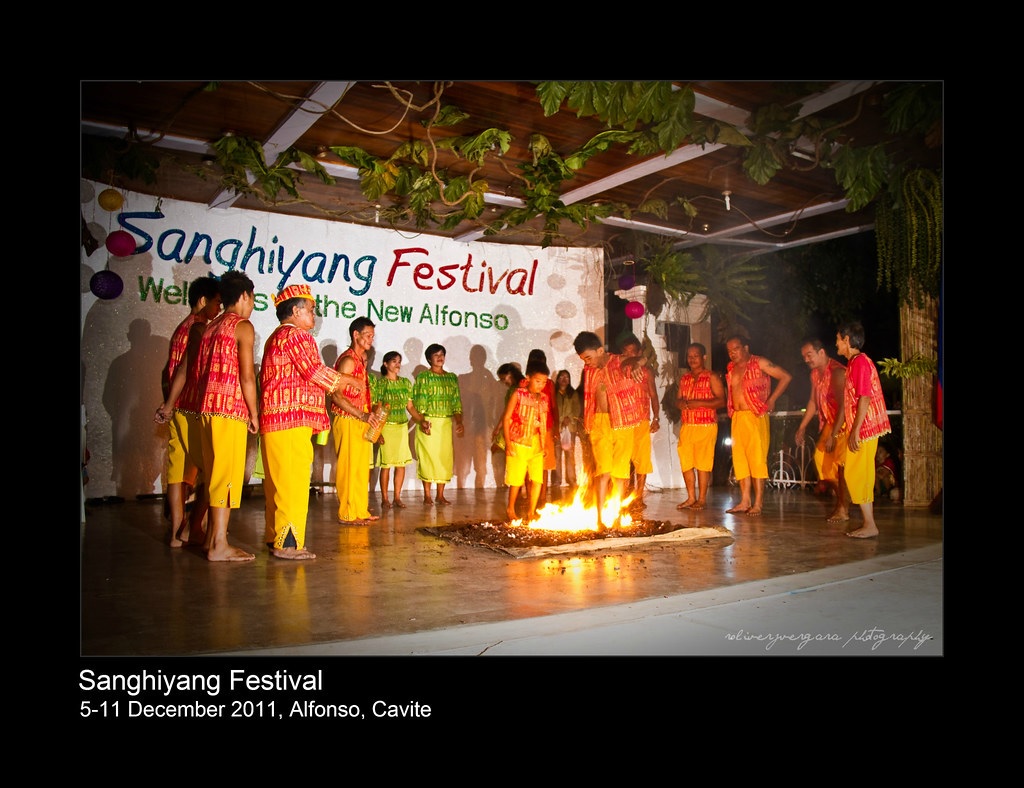
Ethnic Rites from Noah’s Tale
In Alfonso, Cavite, a fertile, upland agricultural town 70 kilometers South of Manila, a yearly reenactment of Noah’s landing through an ethnic rite called Basang Gilagid (Wet Gum) is carried out by a rapidly-dwindling group of elderly local residents led by male Barko’s and female Barka’s (Tagalog for barque, Ark or boat). A total of 8 of these elderly people join in the solemn ceremony, symbolizing the number of people who lived for 1 year inside the Ark. The rite involves the use of various amulets with intricate designs with mystic motifs and figures, as well the invocation of secret prayers, and other cultic practices which have been preserved and passed on to a few qualified individuals. Essentially, the rite includes offering a pig sacrifice which is killed and its blood is poured onto the four corners of the foundation of a house (hence, Basang Gilagid). It recalls the time of the Ark’s landing, particularly when Noah offered a sacrifice as thanksgiving to Yah. Sayaw sa Apoy is a vital part of the rite involving several individuals dancing and walking over fiery coals, which simulates a “human sacrifice” in which the offering triumphantly comes out unburned and alive. This dance has been featured in many international expositions abroad and marveled at by individuals as a supernatural feat, and sometimes labeled as demonic in origin. Since there is no particular biblical reference to this practice, we can presume that it does have some pagan origin that has been incorporated sometime in the past. Note, however, that these practices are not limited to this small town in Cavite but also in a neighboring town. Moreover, during an interview with a real Barko or ethnic elder from Alfonso, the interviewer found out that there were Barko’s who had been actively practicing the rite in Mt. Arayat. This led the interviewer to ask the Barko pointedly if he and his counterparts in Arayat believed Noah’s Ark landed on Mt. Arayat, which he answered affirmatively. Of course, it does not prove our own conclusion but merely vets the growing possibility that all other evidences have already pointed to have valid historical and biblical basis. That is, even without this anthropological evidence, other vital sources have supported the great possibility that Noah and his family had indeed lived in the heartland of Luzon before and after the Great Flood.
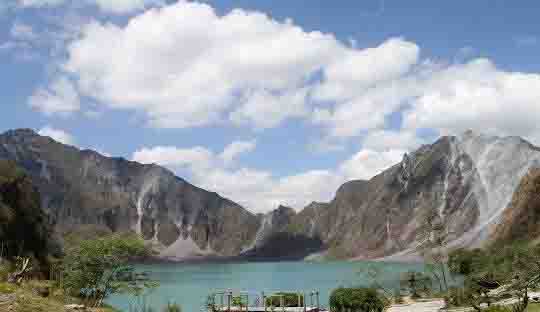
Is This a Reliable Revelation or a Mere Personal View?
This writer has been through this spiritual crossroads before. For many will look at these literary musings as fantastic as the myths we use, if not, simply a purely, imaginative personal view of such a complex and controversial theological issue many have dealt with before with greater scholastic and intellectual authority. But who has greater authority than the Creator Himself Who had revealed His truths through the words and lives of the ancient prophets? Who has put the greatest investment on Truth than the One Who had intentionally made physical things to speak His Word, besides the written record of His eternal plan for humans? If in the distant past He can call specific individuals to declare His works and plans and make every part of physical Creation display His power and majesty that all might recognize and worship Him, why can He not still speak the same original message He had declared before to us today, not just through the written Word or in Creation but also in the very lives of living humans and their interactions with the dynamic forces of Nature that continue to operate as they had before? Noah has shown us without doubt how the Word given to him resulted in great geological changes. Will not the Creator do the same today for us who are children of Noah and of Shem?
For indeed, this is a personal view — nothing more, nothing less. Every person’s faith or belief of any subject whatsoever is an individual’s decision to stand by a truth or a lie. And every truth or lie can be defended and supported by facts. Coming out with these “personal views” of Noah’s life before and after the Flood does cause anyone to hesitate in the face of such a formidable, longstanding conventional belief that the Ark landed somewhere in Turkey. And yet, the conclusion had been reached in the previous chapter and vetted by this chapter, up to this point. There is no turning back. Either our conclusion stands the test of Truth or not. Hence, we call on the final arbiter of Truth with regard to the ultimate question: Where is the Creator in all of this? If He was there in the beginning and in the middle while Noah was floating above the Earth, where is He now in the present age?
So many believers read and look at scriptures as a passive yet interactive record of Yah’s living message. Majority, in fact, treat it like a cellphone that allows them to relive stories and principles through an almost realistic or AI-perfect movie-like reenactment of biblical events. Audio Bible apps spoken by the best actors of Hollywood can actually do this while one closes the eyes and picture the teachings and narratives penned by the prophets and apostles. It used to be that people would only open a bible and read a passage to fathom directly the message from Ruach. Today, the message must pass through or be filtered by artistic directors, copywriters, actors, audio-recording engineers, sound-effects technicians, voice directors and IT engineers, to name a few. The way an actor interprets the spoken message of the prophets can relay a different or even a distorted truth. We no longer have to deal with the issue of the faithfulness of translating the original Hebrew or Greek to any modern language; we must also deal with the wide freedom taken by many in interpreting the text itself. The search for the Truth continues.
As such, this present discussion, likewise, can fall victim to any of the above constraints into divining the Truth of a matter. What hope do we have of determining the ultimate Truth, if we cannot call in the Giver of Truth Himself to take a stand on a matter? But is that possible? How can you summon the Exalted King enthroned in Heaven to sit on the witness stand? There is no need if He, as we said, is doing what He has been doing in the past: declaring the Truth through spoken Revelation (spoken Word of Yah), written Revelation (printed Word of Yah), through created Revelation (physical Word of Yah), and through living or lived revelation (spiritual Word of Ruach believed and lived by a person).
Was Noah a robot who merely followed every command given to him without considering Who he was speaking to? He had no scriptures to depend on aside from the writings and words of Enoch, and his forefathers. Surely, Noah learned to write from his parents and not just from Enoch. Eve knew who she was speaking to when she ate the poisoned fruit; so did Adam. In both cases, it was not Yah. How did Noah then determine the source of his actions, such as to build the Ark? He spoke to Yah. That should settle it. But no! Noah had to know the history of Creation and the rebellion of the wicked angels and their hybrid children through Enoch. He had to see how the sinners of his time were destroying Creation. He had to witness the degradation for the original patterns of life in Creation he had seen and heard from his grandparents who lived close to the time of Adam. What animal was clean or unclean? Noah knew those things, and more. Talking to Yah was just as easy for him to do as it is for us to read scriptures. He had been trained early to know and worship Yah. Building the Ark was already his assigned job even before he was born; and his parents knew it.
As we can see, the 4 criteria for knowing and understanding Revelation existed in the life of Noah: spoken Revelation, written Revelation, created Revelation, and living or lived Revelation. All four can be unified into one Word, whether spoken, written, imaged or lived. It is left to any person to integrate all of these parts into one dynamic, living manifestation of Truth. And it all began with the spoken Word in the beginning. What we read is but a manifestation of the same Truth or message given in the beginning. As such, our conclusions have been borne by all the first 3 aspects of Revelation. What remains is the last: living or lived Revelation. Which means, any truth or principle in the Word can only become a living or lived Revelation if a person or many persons act or perform it — that is, experience it with the direct guidance of Ruach. Does one believe the Resurrection? Does one love an enemy? Does one pray in earnestness? Does one give food to the hungry? Does one visit the sick? These are Revelations that contain commands or duties of a person or believer. But there are Revelations that pertain to Truths that only Yah can perform and are, therefore, meant to teach us, rebuke us, correct us or remind us.
The Ancient Connection between Pinatubo and Arayat Revived
Many mysteries behind the story of the Flood have remained essentially unknown or unexplained, particularly where the Ark landed. In our attempt to resolve the question, we have given enough evidence; but we need a final, more compelling proof of our findings.
Before Pinatubo came into the consciousness of most people of Luzon and Kapuluan, it was but an unrecognized dormant volcano in the Zambales Mountain Range. Yes, it had its part in the Kapampangan legend of Mt. Alaya or Arayat, along with distant Mt. Makiling. But, in spite of its imposing presence, it had just a minor role to play. Until it awakened in 1991. It practically buried the whole of Central Luzon in hot, steaming pyroclastic materials, making many places virtual deserts and ghost towns. And for many years after that, lahar flowed down its slopes, rampaging like leaping grey broncos through river channels, and erasing towns and villages along the way with thick deposits of volcanic debris. Thousands died and many lost homes and businesses in the process; even the US Air Force Base at Clark, Angeles City and the US Naval Base in Subic, Zambales had to be evacuated by all personnel before the eruption and eventually closed by senate decision. A major victory for Kapuluan — courtesy of Yahuah. Amen!
On June 15, 1991, the day Pinatubo erupted, a small car on its way from Metro Manila to Baguio City, laden with 3 passengers, entered the Luzon North Expressway. When it reached the vicinity of Angeles City, right between Pinatubo and Arayat, yellowish-white mud splattered on the windshield and eventually turned into tiny pebbles and sandy mud that reduced visibility to almost zero. Stopping beneath a pedestrian overpass, the 3 had to decide whether to proceed or turn back in the growing maelstrom brought about by Pinatubo’s eruption and a tropical typhoon that hit Zambales smack on center at Signal No. 3! When it rains, it storms and erupts! It was literally a real view of the Hebrews’ encounter with Yahuah at Mt. Sinai. There was darkness, thunder, earthquake, lightning, hail and wind. Like Moses, one would have trembled as well. At 3 P.M., the darkness was like that at nighttime. A mountain was speaking the Word of Yah. But what Word?
We rode on, unmindful of others telling us that quail-egg-sized rocks were falling from the skies. By Yah’s grace, we made it to Baguio at midnight, with a pummeled car and dusty hairs, nostrils and ears. The dust of Pinatubo would arrive a couple of days later in Baguio and eventually surround the Equator within a few months, giving spectacular sunsets in affected countries. Pinatubo totally changed the geographic, social, economic and political landscape of Central Luzon and the whole island, in general. People relocated in other cities and towns, while the former host cities and towns that heavily depended on the presence of the US bases suffered economically, politically and socially. Till now, many have not recovered from the natural disaster.
Pinatubo had a vital message to relay; it led this writer to publish his first book, a free copy of which is available in this link: The Agape: A Celebration of Love (The New and Living Way of Pure, Joyful and Simple Christianity). As Amos had said in Amos 3:6-8 (highlighted):
If a trumpet is blown in a city, will not the people be afraid?
If there is calamity in a city, will not Yahuah have done it?
Surely Yahuah Adonay does nothing,
Unless He reveals His secret to His servants the prophets.
A lion has roared!
Who will not fear?
Yahuah Adonay has spoken!
Who can but prophesy?
Likewise, David wrote in Psalm 18:7-15 that Creation itself speaks Yah’s words.
Yahuah thundered from heaven,
And the Most High uttered His voice,
Hailstones and coals of fire.
He sent out His arrows and scattered the foe,
Lightnings in abundance, and He vanquished them.
Then the channels of the sea were seen,
The foundations of the world were uncovered
At Your rebuke, O Yahuah,
At the blast of the breath of Your nostrils.
For those who have not read the book, it will take time for us to explain the connection to our present story; however, spoken Revelation, written Revelation, Created Revelation and living Revelation all came about through this real geologic event this writer encountered in 1991. More than 10 years later, he wrote a book about Noah. And, finally, 33 years after with this ongoing series, the connection between Pinatubo and Arayat, when they arose from the plains of Pangaea during the Flood, now confirms the conclusions we have derived. How?
Looking at the events at Mt. Sinai (where Yah appeared for the first time to a human since the time of Enoch and Noah) and what were revealed during the events at Mt. Pinatubo within the context of the events that transpired during the Great Flood, this writer can see the undeniable Presence of Ruach revealing the Word that had been delivered in the past and is now being clearly confirmed, established and refreshed for our benefits. This is not a message for any one person alone but for a whole nation and to the Kingdom of Yah on Earth today. For when Elohim spoke Their Word, They created the Earth and the whole Universe; that Revelation was recorded and preserved by the prophets and passed on to us who now believe and live it through our faith in Yahusha, the Promised Seed.
Yet, the narratives of the natives of Kapuluan fortuitously preserved the original story of the Creator through their oral traditions. Although they may seem so crude and even outlandish in so many ways compared to scriptures, they serve to confirm what other firm evidences have been given to us by the wise Creator. That is, including the things that He does in our own lives from day-to-day and from generation-to-generation. His Word continues to live beyond the book and within us, and though our experiences. All the things He made, including us, speak of His glory and majesty. And of His mighty works of saving and blessing humans in every generation. That is, those who have the courage to speak the Revealed Word.
Finally, in spite of the Spanish roots of the name given to Angeles City, Pampanga, it seems appropriate that it should be the name given to a prominent city that had hosted the largest US Air Force Base in Asia and Pacific and which played a vital role in three major war theaters participated in by the US, namely, World War II, the Korean War and the Vietnam War. If indeed Noah and his family had lived within the same Central Plains of Luzon as Angeles City is located in and that it was the same ancient lands where the wicked angels and their hybrid children had also lived in, it is rather auspicious that those Nephilim who had first invented weapons of war and of mass destruction (and who died in the Flood — the real, divine “weapon of mass destruction”) should also remain and continue their practices in our times. And if it took Yahuah Himself to drive away those military bases through Mt. Pinatubo’s (that is, Yah’s) fiery rage, what message can we derive from that? We leave that to the reader to ponder upon.
Next, we will deal with the divine heritage that Yahuah had given Kapuluang Ophir through Noah and his son Shem and his children. Recognizing and preserving that legacy requires us to become one in acknowledging our individual roles in establishing the authority of Yah in our lives as individuals and as a nation.
